A Nuclear Renaissance or a False Dawn?
In the previous instalment of Will Dufton’s series on Nuclear energy, he discussed a brief history of nuclear fission - and how we got to where we are today: from Marie Curie to the Manhattan Project. This time, he shares the state of play today and asks if we are living in a new renaissance or if this is a false dawn.
The Nuclear Renaissance in the News
The news cycle for nuclear fission has seen some extraordinary developments this year.
In July, President Biden signed the ADVANCE Act. This instructs the Nuclear Regulatory Commission to lower the barriers for new nuclear projects and increase funding for domestic uranium enrichment. This is important since Russia and China control 54% of the global supply of enriched uranium today, the fuel of nuclear fission reactors. The ADVANCE Act increases new nuclear’s momentum within government, and the Inflation Reduction Act also allocates significant subsidies to nuclear and HALEU production.
In September, Microsoft signed a 20-year power purchase agreement with Constellation Energy to restart the Unit 1 reactor at Three Mile Island, which had been decommissioned in 2019. Estimates suggest Microsoft is paying >$100/MWh, or 2-3x the average wholesale price of electricity in the region. This is a landmark deal that could be a template for others to follow.
October saw a flurry of other deals between Big Tech and nuclear companies. Amazon led a $500m funding round into X-Energy, a small modular reactor (SMR) company, and agreed to offtake energy from their first 320MW reactor. Google has agreed to offtake 500MW of energy from Kairos Power by 2035, Equinix did the same with Oklo, and Oracle announced plans to power a new 1GW data centre with 3 SMRs. The AI boom revealed a bottleneck in energy availability and these data centre players are power-hungry, cash-rich, and ultra-competitive. Some forecasts indicate data centre power demand tripling to 12% of US power demand by 2030. They are the ideal patrons of a nuclear renaissance.
And throughout this period we have seen some enormous private funding rounds for fission reactor startups: Radiant Nuclear (high temperature gas micro-reactor) raised $100m; Newcleo (lead cooled fast small modular reactor) raised an additional €48m; Aalo Atomics (high temperature gas reactor) raised $27m; and Last Energy (small pressurised water-reactor) raised $40m. It’s worth mentioning some of the huge rounds in nuclear fusion, too, not least Pacific Fusion raising $900m and Tokamak Energy bagging $125m.
Is this Nuclear’s Clean Energy Moment?
This is all good news for the climate crisis. Both the International Energy Agency and the Intergovernmental Panel on Climate Change (IPCC) have said that international climate objectives cannot be met without nuclear power. The IPCC identified in 2021 that nuclear power has avoided about 74Gt of CO2 emissions over the past 50 years - nearly two years’ worth of total global energy-related emissions - and will need to 6x in capacity if we are to achieve a “middle of the road” scenario by 2050.
Renewable energy is fantastic, but its intermittency means it cannot be a drop-in replacement for all of our power needs. Nuclear, even when factoring in the deaths relating to the aforementioned tragedies, is in fact safer and cleaner than wind energy, causing 0.03 deaths per terawatt hour produced and 6 tons of CO2 versus 0.04 deaths and 11 tons for wind (oil causes 18.4 deaths per TWh of energy generated).
A False Dawn?
Public sentiment for nuclear energy is at a decade-long high across multiple global surveys; governments across the world, including the UK and France, are looking to extend the lifetime of their nuclear fleets in a bid to strengthen their energy security; and Trump has made positive noises about increasing domestic energy supply of all kinds and cutting bureaucracy.
Nonetheless, nuclear is starting from a very high base of regulatory scrutiny and it has not had many recent wins, the cost overruns of large reactors like Hinkley Point and Vogtle and small reactors like NuScale being acute examples. A Nuclear Renaissance would require reactors to become cheaper, easier and faster to build, and we don’t have much evidence of that today.
A case in point is that some of the most progressed “small modular reactors” - so called for being quicker, easier and cheaper to build than big reactors - have a similar size footprint to more powerful reactors built 40 years ago. The economics of nuclear power have not scaled down linearly with plant size as hoped.
Nuclear’s Waste & Fuel Problems
We also do not have enough available enriched uranium today to power all of the reactors vying to come online. US uranium production has plummeted to near zero after a steady decline since the 1980s. The ADVANCE Act reiterated the ban on the purchase of Russian fuel. Any renaissance for nuclear reactors must be matched by a revival of the enrichment supply chain in the West.
The safety challenges haven’t yet gone away, either. Nuclear waste remains the second largest liability on the US government’s balance sheet after social security. The projected total cost of clean-up after the Manhattan Project alone is well over $300 billion. Germany have no permanent deposit site for its waste and has wrestled with leakages at inadequate sites for several decades. We must figure out what to do with the waste we have already, beyond burying it underground and hoping for the best.
Does Nuclear deserve a second chance? In the third part of our series we will set out the bull case for new nuclear and share some of the opportunities we see, plus a market map of its movers and shakers. We are looking actively at opportunities across the nuclear fission and fusion sectors, both from our pre-seed / seed fund and at early growth. Please be in touch!



